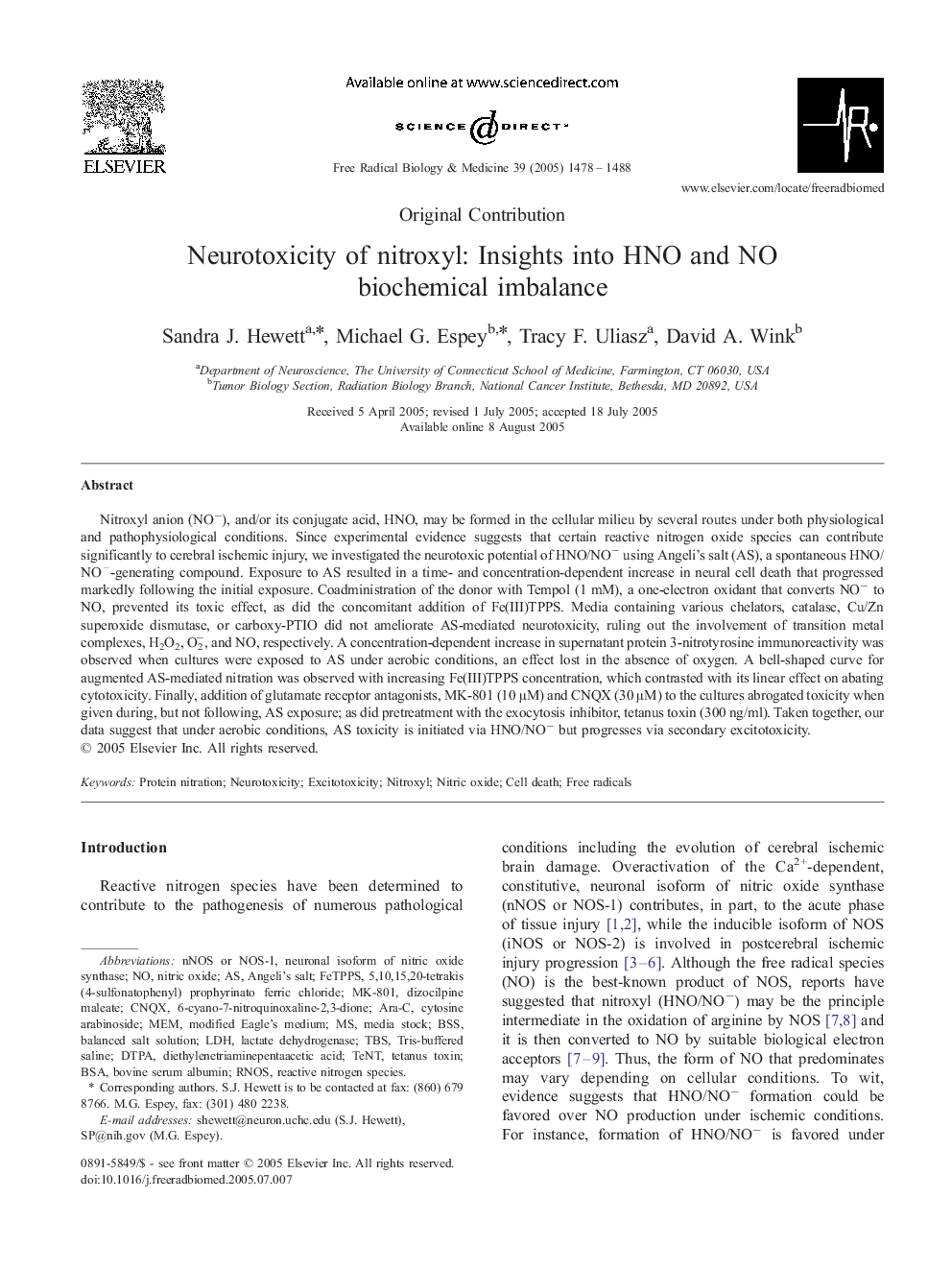| Article ID | Journal | Published Year | Pages | File Type |
|---|---|---|---|---|
| 10738841 | Free Radical Biology and Medicine | 2005 | 11 Pages |
Abstract
Nitroxyl anion (NOâ), and/or its conjugate acid, HNO, may be formed in the cellular milieu by several routes under both physiological and pathophysiological conditions. Since experimental evidence suggests that certain reactive nitrogen oxide species can contribute significantly to cerebral ischemic injury, we investigated the neurotoxic potential of HNO/NOâ using Angeli's salt (AS), a spontaneous HNO/NOâ-generating compound. Exposure to AS resulted in a time- and concentration-dependent increase in neural cell death that progressed markedly following the initial exposure. Coadministration of the donor with Tempol (1 mM), a one-electron oxidant that converts NOâ to NO, prevented its toxic effect, as did the concomitant addition of Fe(III)TPPS. Media containing various chelators, catalase, Cu/Zn superoxide dismutase, or carboxy-PTIO did not ameliorate AS-mediated neurotoxicity, ruling out the involvement of transition metal complexes, H2O2, O2â, and NO, respectively. A concentration-dependent increase in supernatant protein 3-nitrotyrosine immunoreactivity was observed when cultures were exposed to AS under aerobic conditions, an effect lost in the absence of oxygen. A bell-shaped curve for augmented AS-mediated nitration was observed with increasing Fe(III)TPPS concentration, which contrasted with its linear effect on abating cytotoxicity. Finally, addition of glutamate receptor antagonists, MK-801 (10 μM) and CNQX (30 μM) to the cultures abrogated toxicity when given during, but not following, AS exposure; as did pretreatment with the exocytosis inhibitor, tetanus toxin (300 ng/ml). Taken together, our data suggest that under aerobic conditions, AS toxicity is initiated via HNO/NOâ but progresses via secondary excitotoxicity.
Keywords
DTPARNOSFeTPPSTeNTBSScytosine arabinosideTBSMK-8016-Cyano-7-nitroquinoxaline-2,3-dioneBSAAra-Cbovine serum albuminexcitotoxicityneuronal isoform of Nitric oxide synthaseTris-buffered salineDiethylenetriaminepentaacetic acidDizocilpine maleateFree radicalsTetanus toxinNeurotoxicityCNQXlactate dehydrogenaseLDHMEMModified Eagle's Mediumbalanced salt solutionCell deathAngeli's saltProtein nitrationnitroxylNitric oxidereactive nitrogen species
Related Topics
Life Sciences
Biochemistry, Genetics and Molecular Biology
Ageing
Authors
Sandra J. Hewett, Michael G. Espey, Tracy F. Uliasz, David A. Wink,
